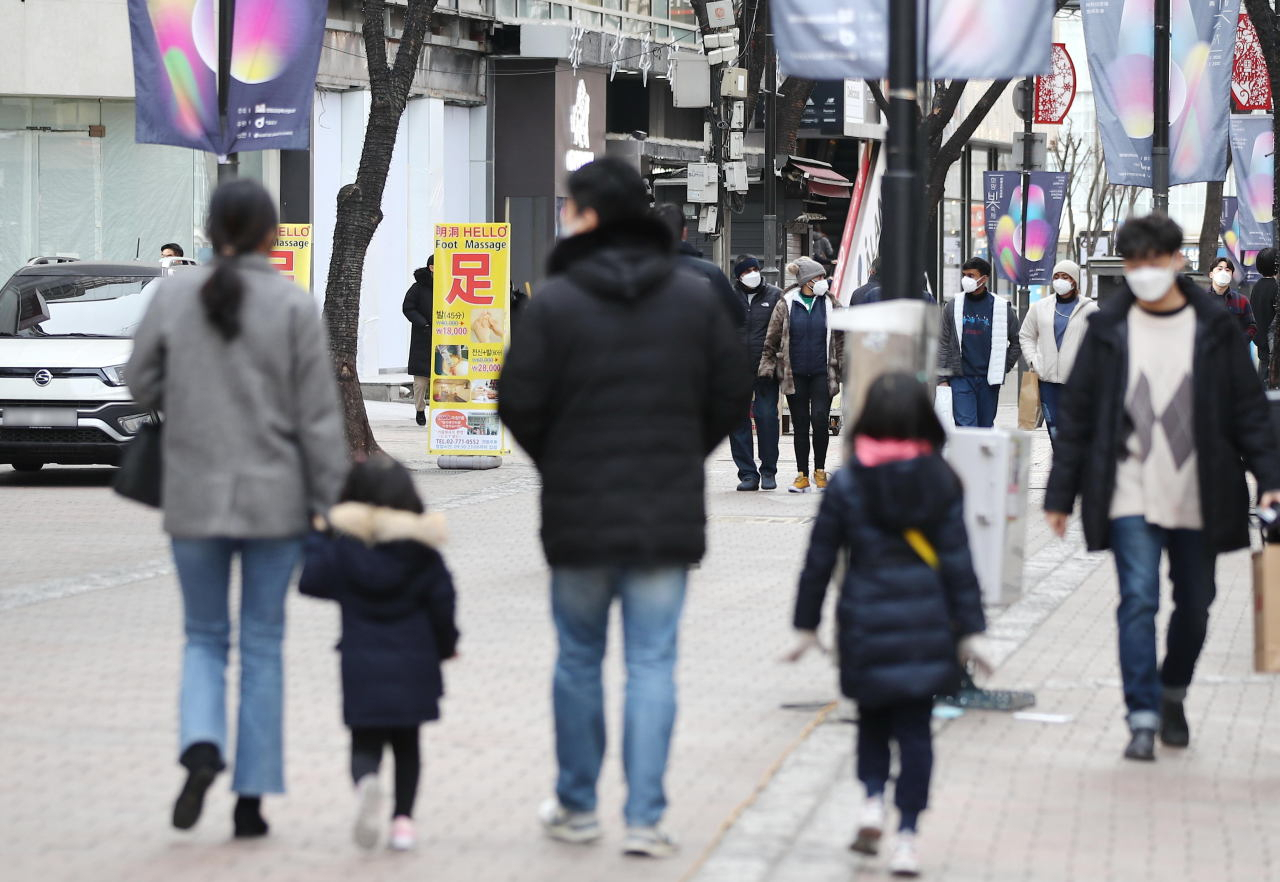 |
A family strolls through the Myeong-dong shopping district in central Seoul on Jan. 3, 2021. (Yonhap) |
South Korean household income rose for the second quarter in a row in the fourth quarter of last year thanks to an economic recovery amid eased antivirus curbs, data showed Thursday.
The average household earned 4.64 million won ($3,876) per month in the October-December period, up 6.4 percent from the previous year, according to the data from Statistics Korea.
It marked the largest increase for any fourth quarter since 2011 when the figure advanced 7.2 percent.
But the fourth-quarter on-year income growth slowed from the fastest-ever rise of 8 percent the previous quarter.
Wage income rose 5.6 percent on-year to an average of 2.89 million won per month in the fourth quarter. The monthly average income from business operations also climbed 8.6 percent to 885,000 won, the data showed.
The monthly average transfer income backed by state support also led the overall increase, with the figure advancing 10.7 percent on-year to 415,000 won in the fourth quarter.
The government doled out another round of emergency relief funds to people in the bottom 88 percent income bracket with an extra budget beginning from end-September for use by end-December.
Household spending also rose in the fourth quarter, led by gains in spending on clothing and leisure activities, amid the relaxation of antivirus rules.
Monthly household consumption expenditure averaged 2.55 million won in the fourth quarter, up 5.8 percent from a year ago.
Spending on clothing and shoes went up 12.2 percent to 161,000 won, and that on cultural and leisure activities rose 11 percent to 144,000 won. Expenditure on education also jumped 20.6 percent to 154,000 won per month on average, the data showed.
In November, the government implemented the "Living with COVID-19" scheme, which called for the relaxation of monthslong strict antivirus restrictions for people's gradual return to pre-pandemic life.
Due to another virus wave driven by the omicron wave, however, the government again tightened social distancing rules in December.
Meanwhile, the income gap between the haves and have-nots narrowed slightly in the fourth quarter as people in the bottom 20 percent income bracket were supported by transfer income.
The average monthly income of the bottom 20 percent income bracket rose 8.3 percent on-year to 1.06 million won, and the figure for the upper 20 percent income range grew 6.9 percent to 10.13 million, the data showed. (Yonhap)







